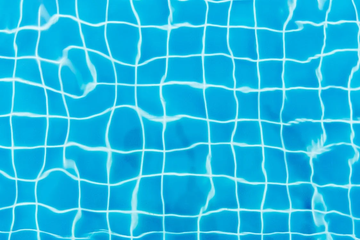FYI:- You’ll wanna read this before your vacay
There’s something undeniably relaxing about swimming, whether it’s that first head-dip into a sunlit hotel pool, the rhythmic calm of early morning laps, or the salty joy of wave-hopping on a beach day. It feels like freedom. But your hair? It might not feel the same way.
Because for all the bliss that comes with swimming, the aftermath isn’t exactly glamorous. Cue crunchy ends, tangled lengths, a scalp that feels tight, and that stubborn scent of chlorine that lingers no matter how long you rinse. Add UV rays, saltwater, and pool chemicals into the mix, and you’ve got a recipe for serious strand stress.
The good news? With the right post-swim routine, you can have both summer fun and soft, healthy hair. This guide doesn’t involve complicated regimens or overloading your shelf with products. It shows you what your hair really needs after a swim, how to restore moisture and shine, and when (and if) you need to wash it.
What chlorine, salt, and sun do to your hair
Vacation swimming may feel light and effortless, but behind the scenes, your hair is going through a lot. Pool water, seawater, and sunlight each bring their own brand of havoc to your strands.
First of all, chlorine is a disinfectant, which means it’s excellent at keeping pools clean, but also very effective at stripping natural oils from your scalp and hair. Without those oils, your hair’s protective barrier weakens, leaving it dry, brittle, and more prone to breakage. For color-treated hair, chlorine can cause fading and even give light tones a greenish tinge (yep, that’s real).
Saltwater, while more natural, is still harsh. The salt draws moisture out of the hair shaft through osmosis, leaving strands dehydrated and coarse. Combine that with wind and sun, and you’ve got a perfect storm for split ends and tangles.
UV exposure is often overlooked, but it’s just as damaging. Like your skin, your hair can suffer from too much sun. UV rays break down the protein structure of hair (mainly keratin), weakening its elasticity and causing colour to fade faster.
In short: chlorine strips, salt dehydrates, and the sun weakens. That’s why post-swimming hair care isn’t a case of vanity, but damage control.
Do you have to wash your hair after swimming?
It’s one of the most Googled questions about swimming and hair—and for good reason. If you’re hitting the hotel pool, swimming laps at your local gym, or wading through saltwater on holiday, you’ve probably wondered: Do I really have to wash my hair every single time?
Short answer? Yes. But let’s unpack why and how to do it without over-washing.
Post-swim rinsing is non-negotiable. Even if you’re not shampooing every time, rinsing your hair thoroughly with clean water helps flush out chlorine, salt, and other residues that linger and continue to dry out or irritate the scalp. Chlorine, especially, can remain active in your hair hours after a swim, exacerbating damage if not removed.
Washing doesn’t have to mean full-blown shampooing daily. If you’re swimming often, alternate between a gentle, hydrating shampoo and a simple rinse followed by a lightweight conditioning or repairing spray. This keeps your hair clean and preserves your natural oils.
Think of it like skincare for your scalp. Just like you wouldn’t (or at least shouldn’t) leave SPF or sweat on your face, your scalp deserves a quick refresh after a swim session. It’s the difference between manageable, healthy hair and hair that feels like hay.
The ultimate post-swimming hair care routine
Here it is: a simple, science-backed ritual that works, no matter your hair type or texture.
1. Rinse ASAP
Even before you shampoo, give your hair a thorough rinse with clean, lukewarm water. This helps remove surface chlorine or salt before they fully penetrate the hair shaft and do long-term damage.
2. Use a gentle, sulphate-free shampoo (if needed)
If you’ve been swimming in treated pools or the sea, use a mild clarifying or moisturising shampoo to cleanse without stripping your scalp. You don’t have to shampoo daily, but aim to do so every 2–3 swims, especially if your hair feels dry or sticky.
3. Condition like you mean it
Hydration is everything after exposure to sun and water. Opt for a deep, nourishing conditioner that helps restore moisture balance. Focus on the mid-lengths and ends, and leave it in for at least 3–5 minutes before rinsing.
4. Detangle with care
Wet hair is fragile, especially after a swim. Use a wide-tooth comb or detangling brush, starting at the ends and working your way up. Avoid yanking or brushing hair while dripping wet—pat dry with a microfiber towel first to reduce breakage.
5. Treat with leave-ins or serums
This is your recovery phase. A lightweight moisture-repair spray or argan oil serum helps seal the cuticle, smooth flyaways, and restore softness. Look for products that nourish without weighing your hair down, especially if you’ll be styling it later.
6. Protect it moving forward
Heading back into the sun? Use a UV protectant spray or wear a hat to shield strands. No swim plans today? Great—let your hair air-dry or style gently with low heat. Either way, avoid tight hairstyles that can cause further stress.
Remember: Make it a habit, not a hassle. A consistent post-swim ritual can be the difference between summer hair goals and a season of regret. Keep a small “swim kit” in your beach bag or gym locker so you’re always prepared to treat your hair with the TLC it deserves.
Pool-proof ingredients to use on your hair after swimming
When it comes to post-swimming hair care, not all products work in the same way. Some ingredients help heal and protect; others just mask the damage. Here’s what to look for on the label (and in your routine) if you want to bring your hair back to life after chlorine, saltwater, and sun exposure.
Argan oil
Rich in essential fatty acids, vitamin E, and antioxidants, argan oil helps replenish moisture, soften dry ends, and add a protective layer against UV and environmental stressors. A few drops of a nourishing argan oil serum go a long way—perfect as a post-wash serum or to tame frizz on dry hair.
Keratin
This structural protein makes up the outer layer of your hair. After swimming, keratin levels can become depleted, leaving hair brittle and dull. Products that contain hydrolysed keratin can help repair and strengthen the cuticle, improving elasticity and shine.
Amino acids + panthenol
Amino acids restore protein bonds, while panthenol (a form of vitamin B5) deeply hydrates. Together, they support smoother, more manageable strands, especially if your hair has taken a beating from daily swims.
Moisture-repair sprays
A lightweight mist with humectants (like glycerin) and botanical oils can provide a daily refresh without buildup. Use on damp or dry hair to hydrate, detangle, and protect throughout the day.
Bonus tip: Avoid heavy silicones that can seal in chlorine or salt. Opt instead for clean, nourishing formulas that strengthen and soothe without suffocating your scalp or strands.
Long-term strategies for swimmers who wash often
If you’re a regular swimmer—whether you’re training for a triathlon or just addicted to the post-lap high—your hair needs a bit more than the occasional deep condition. Repeated exposure to chlorinated or saltwater can break down the hair’s natural defences, so a smart, sustainable routine matters.
Here’s how to keep strands strong, even when swimming several times a week:
1. Use a pre-swim barrier
Before diving in, apply a lightweight leave-in conditioner or a few drops of oil to create a water-resistant shield. It won’t block all absorption, but it can help limit how much chlorine or saltwater soaks into your strands.
2. Rotate your shampoo
Clarifying shampoos help remove chemical buildup, but overusing them can strip the scalp. Alternate with a gentle, sulphate-free cleanser to keep the microbiome in balance and avoid dryness.
3. Don’t skip conditioning
A rich conditioner or weekly hair mask will replenish lost moisture and keep your cuticle smooth, particularly important if you colour your hair or use heat styling.
4. Prioritise scalp health
Frequent washing can throw your scalp’s balance off. Try incorporating scalp-friendly ingredients like tea tree, peppermint, or prebiotics to reduce inflammation and flakiness.
5. Get regular trims
Even with the best products, regular swimming can lead to split ends over time. Keep them in check with consistent trims to maintain shape and avoid unnecessary breakage.
A few tweaks can make all the difference, keeping your hair strong, shiny, and ready for your next swim.
Swim, hydrate, repeat
With a little know-how and the right products, post-swimming hair care doesn’t have to be a hassle. No matter if you’re diving in daily or just chasing sun-soaked weekends, protecting your hair is totally doable.
Want more tips on keeping your hair healthy through every season (and splash)? Head to the LifeTYME blog where we break it all down.





